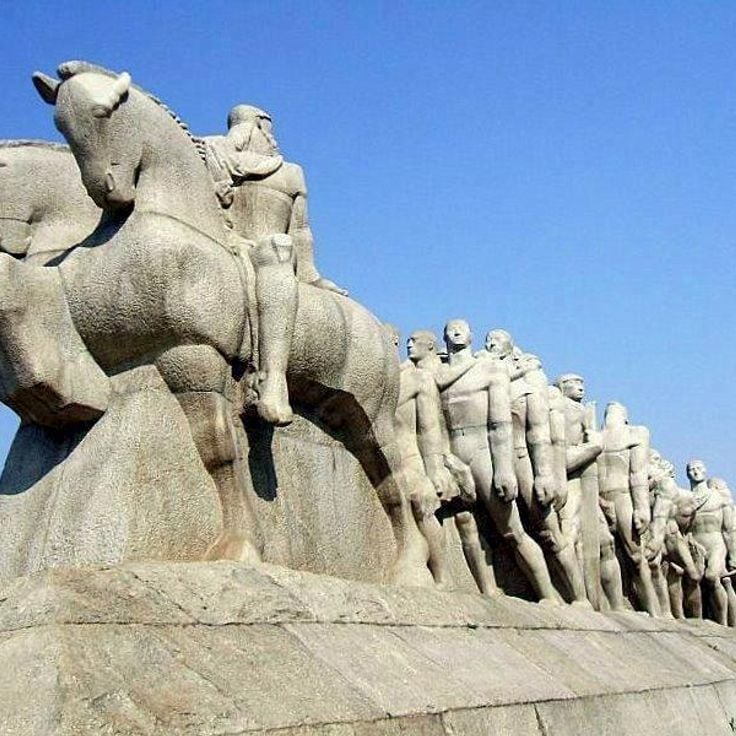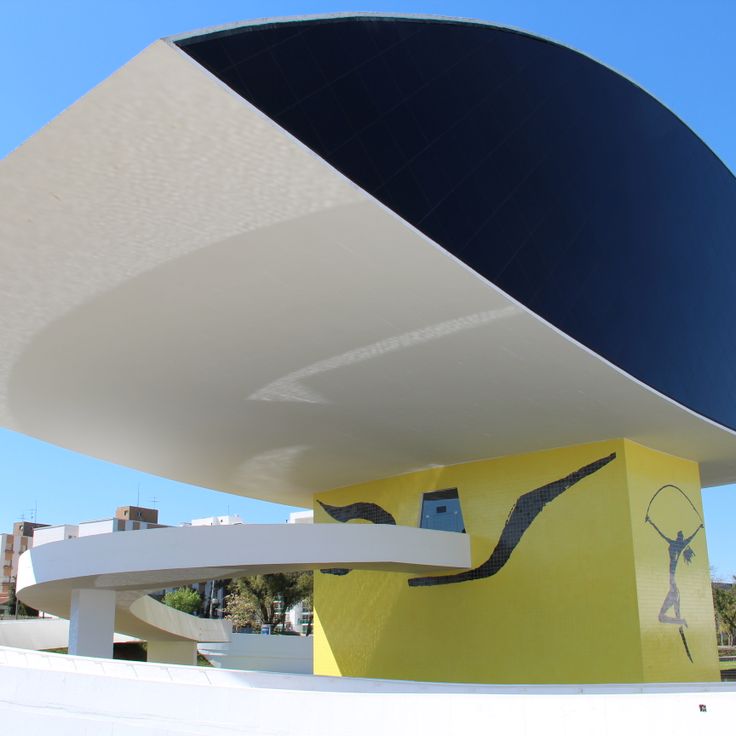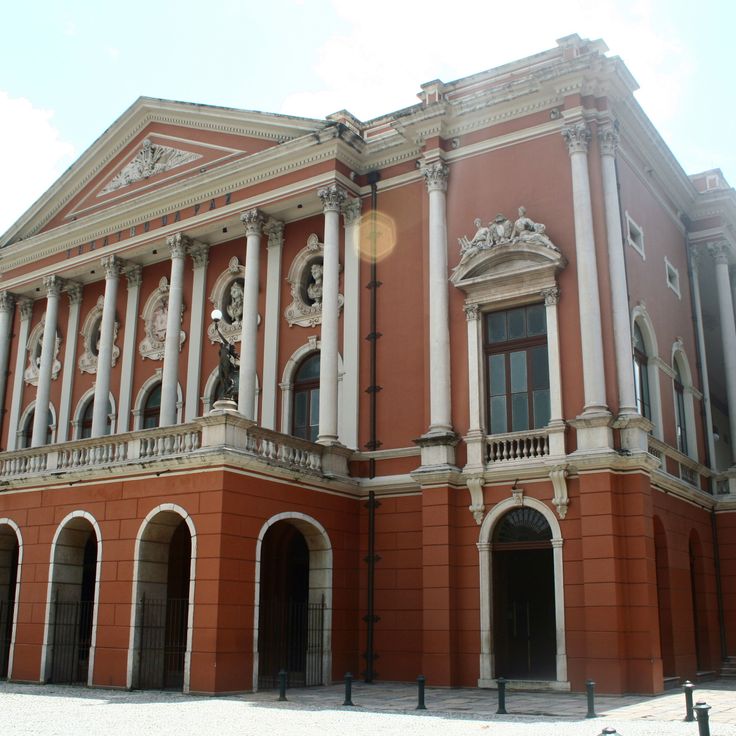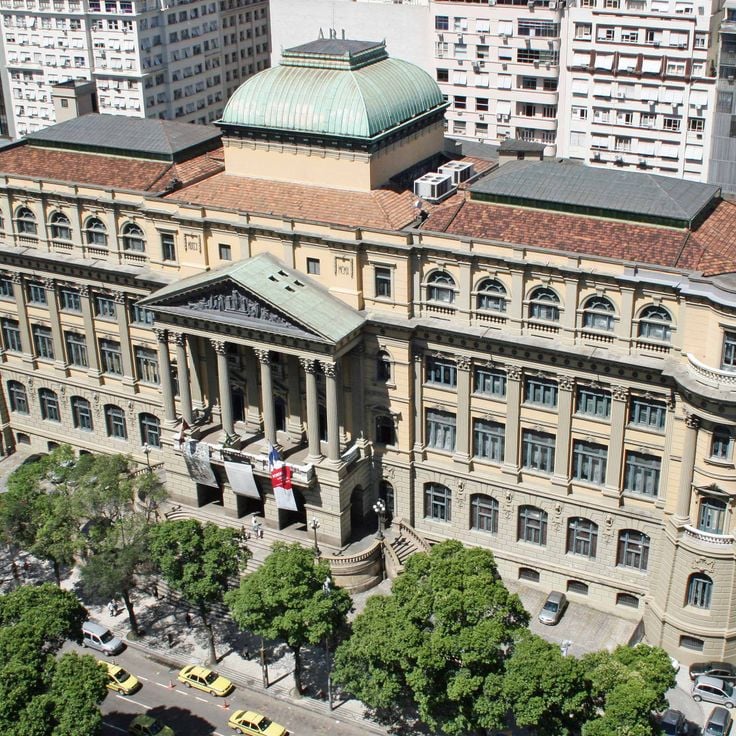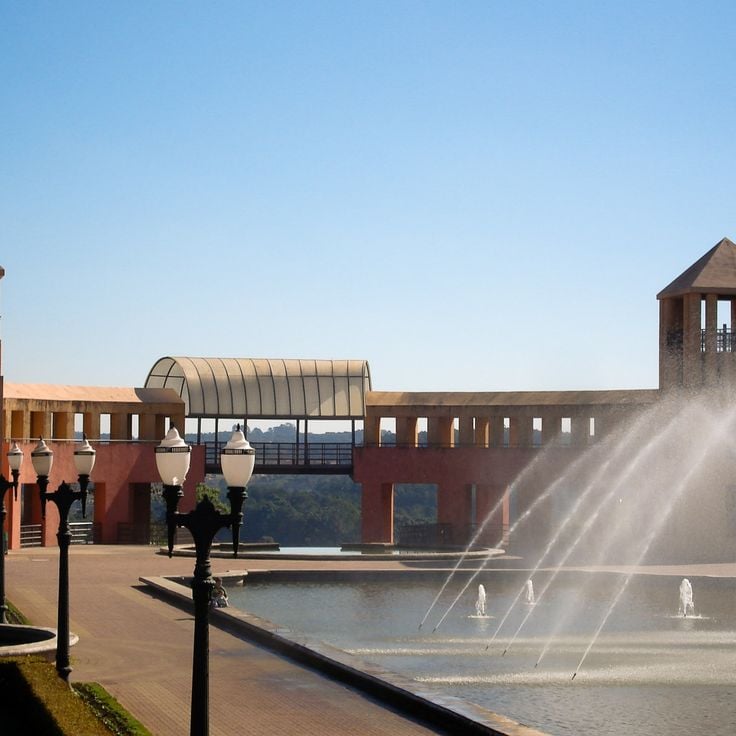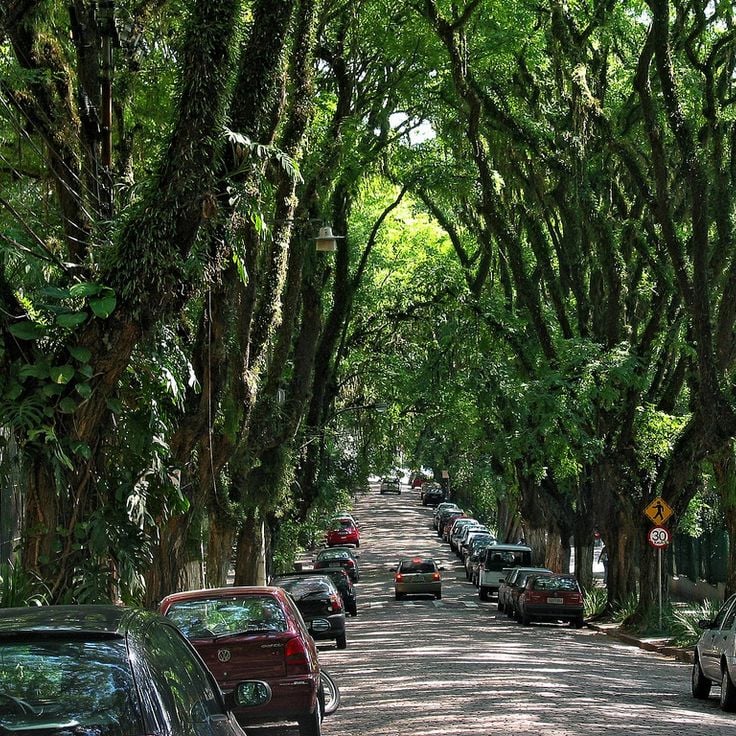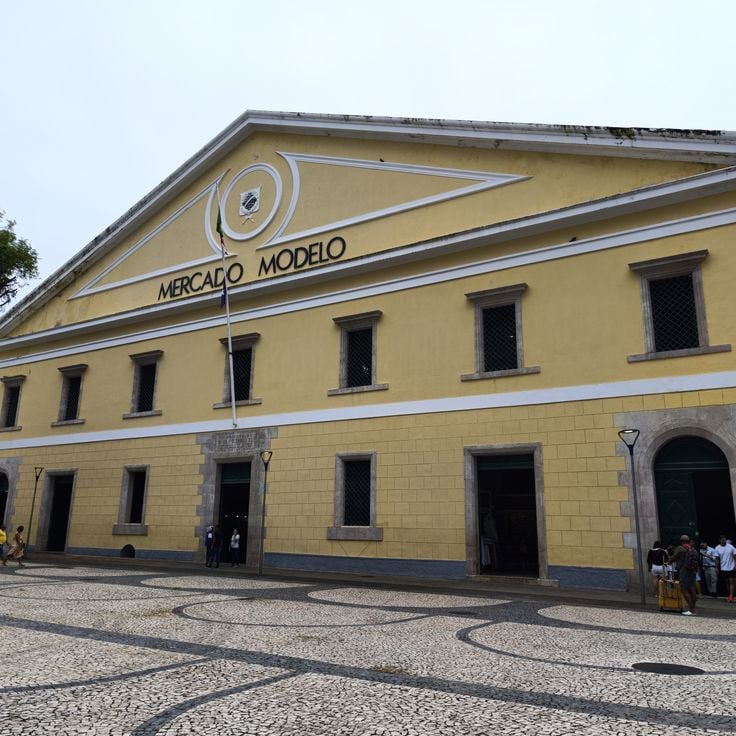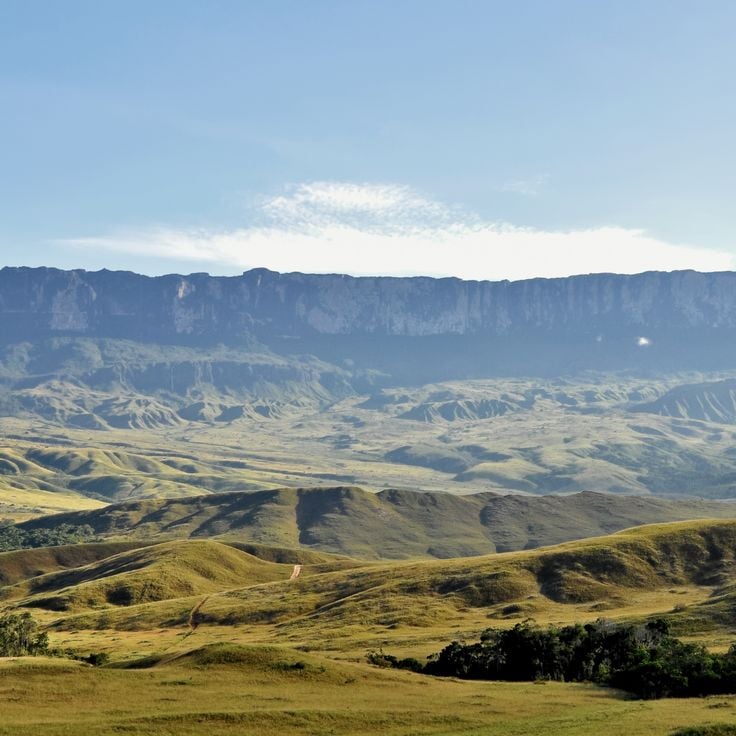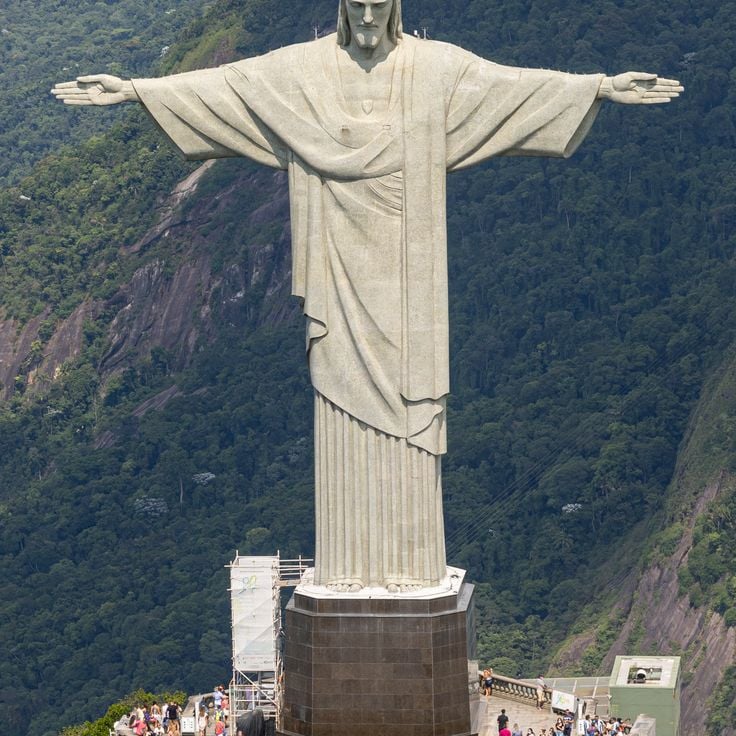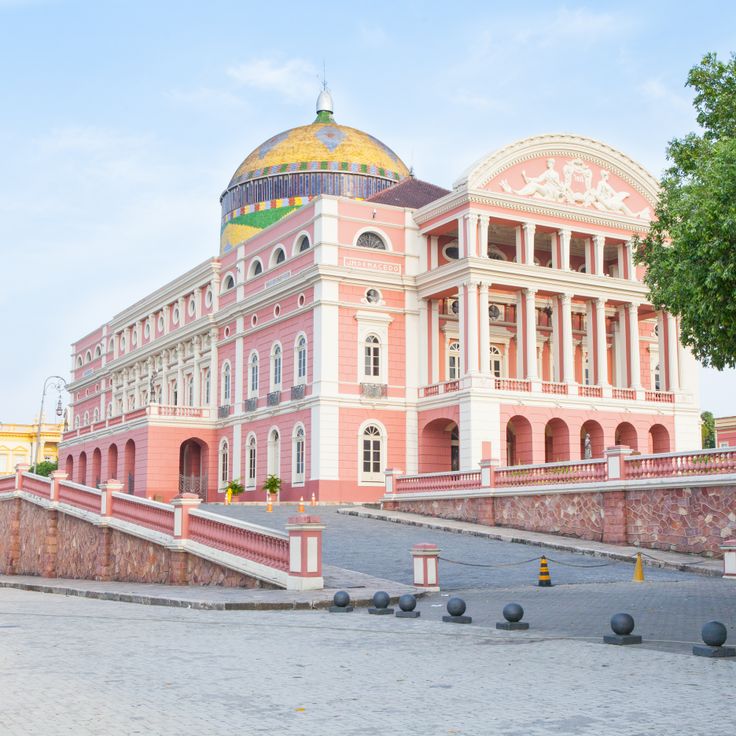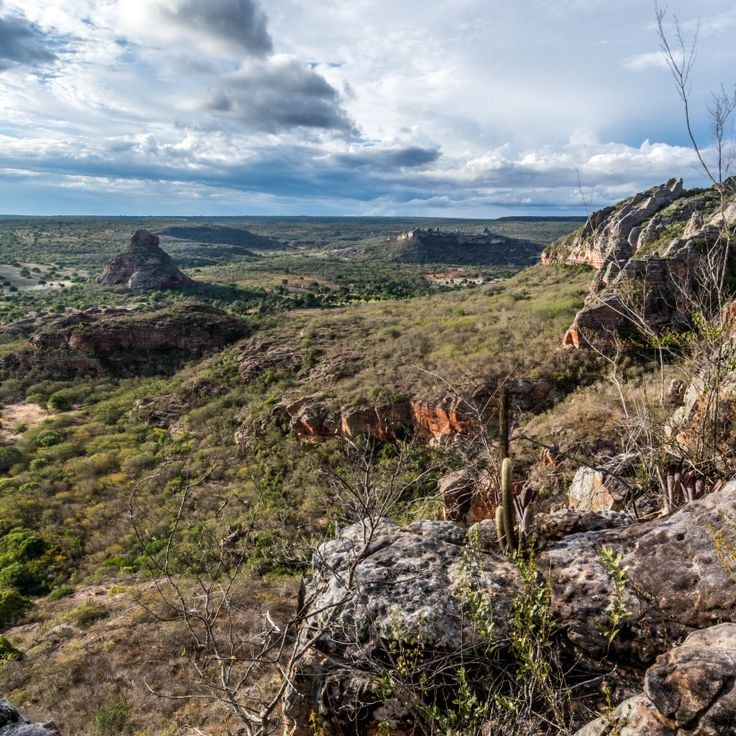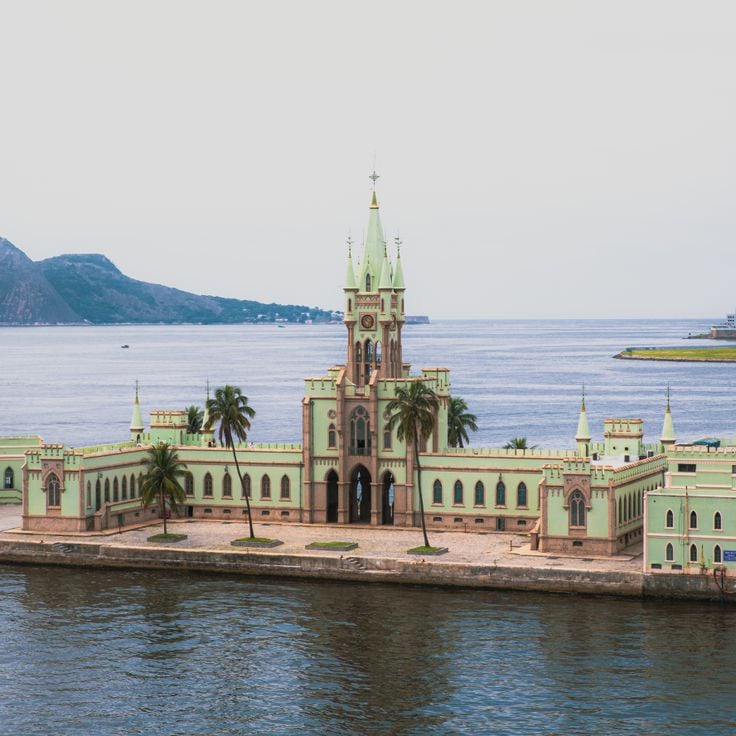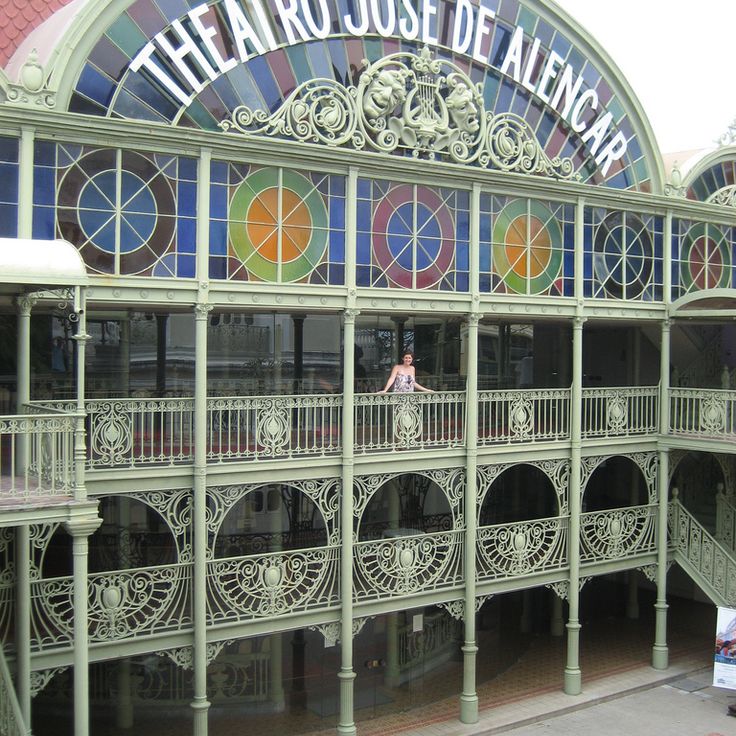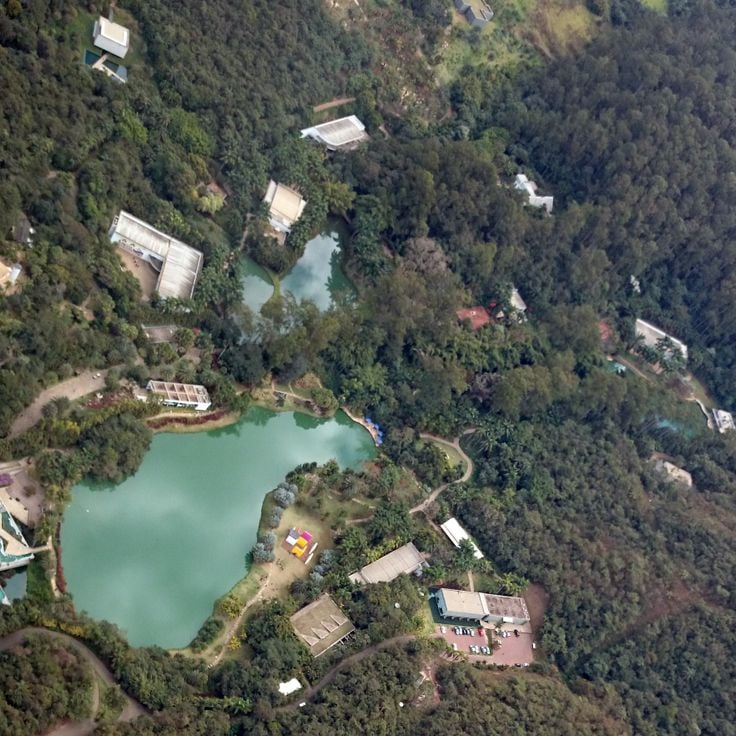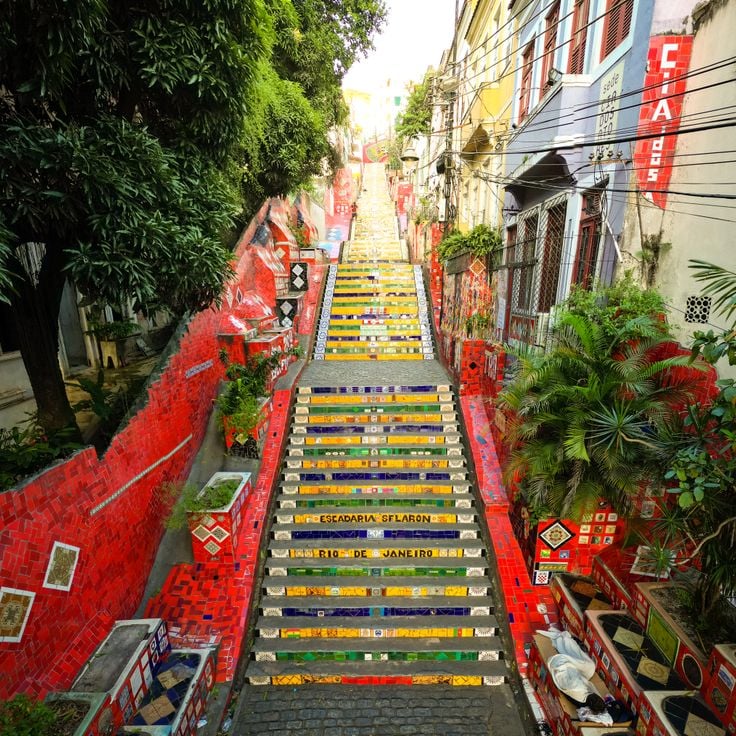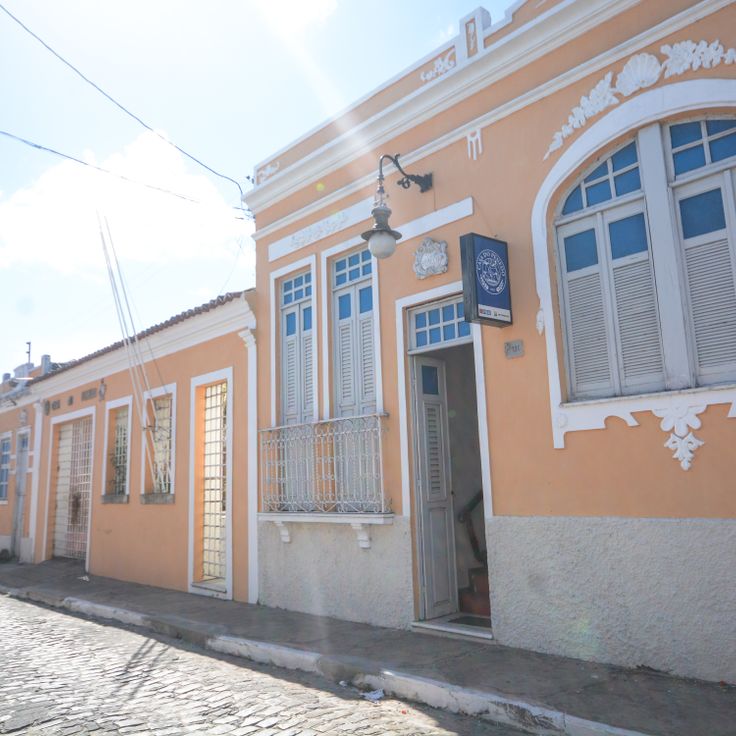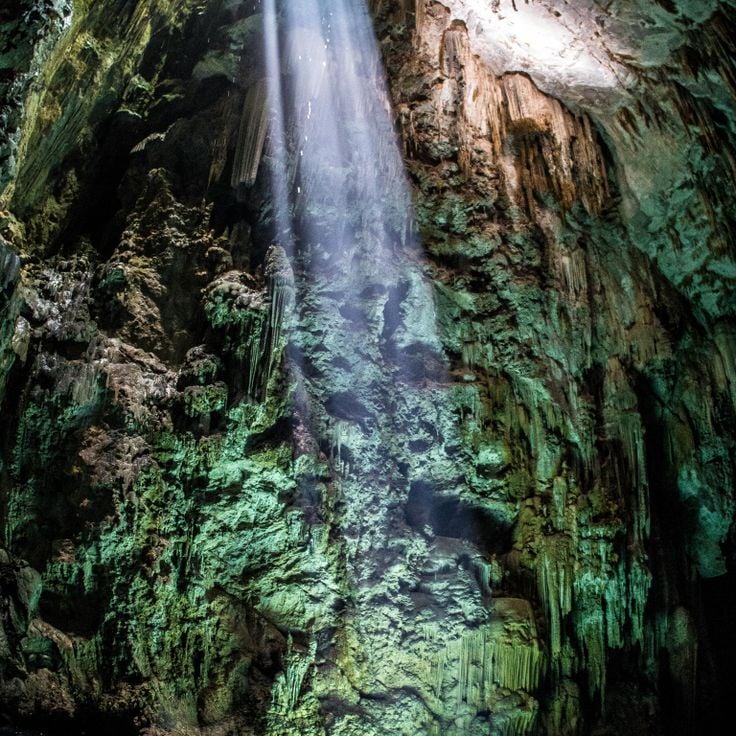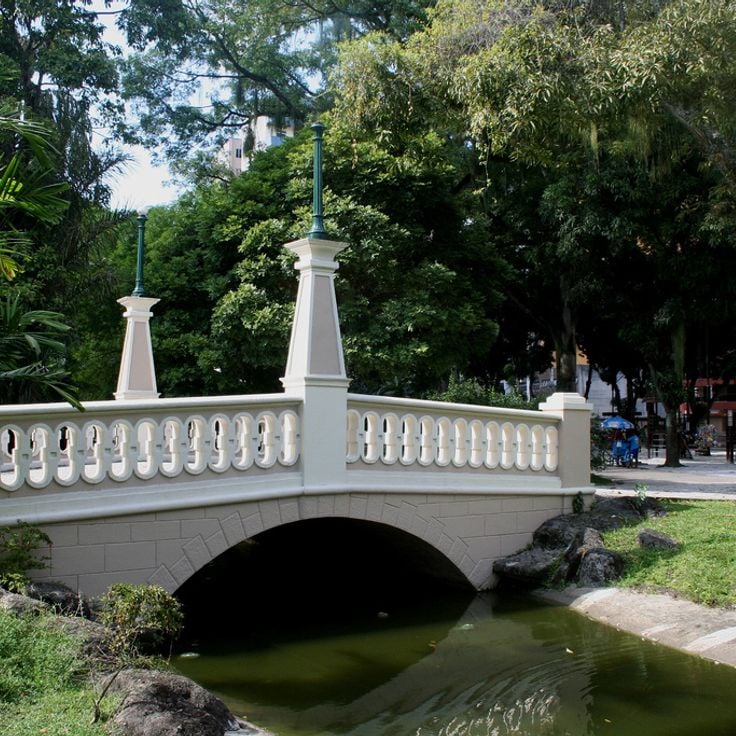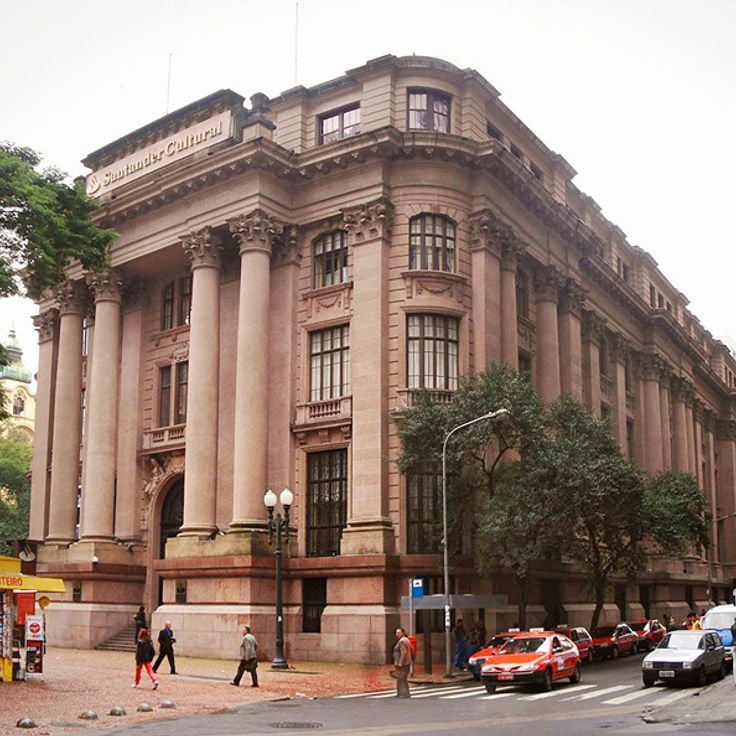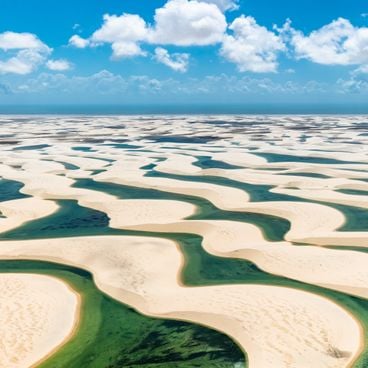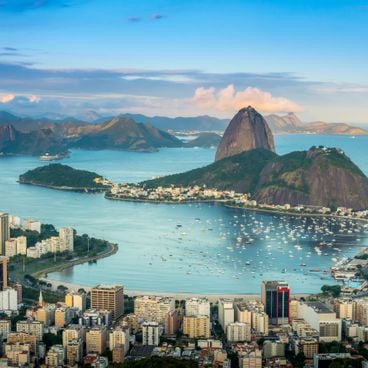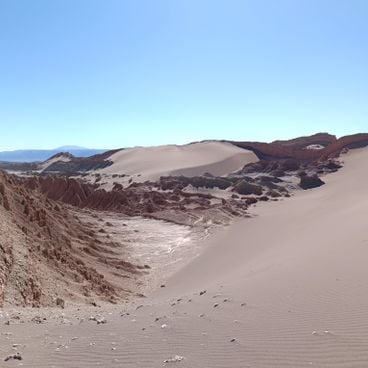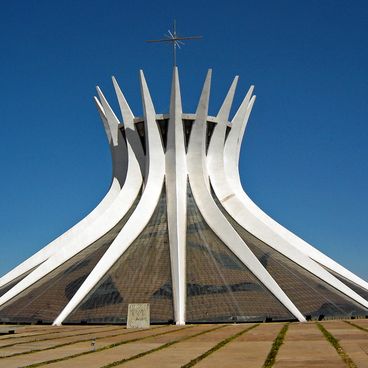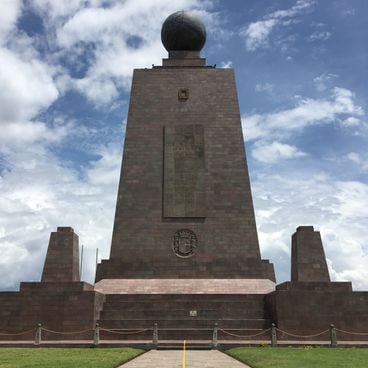Brazilian architectural heritage reflects centuries of history, from colonial fortifications to contemporary structures. In São Paulo, the Flag Monument pays tribute to colonial expeditions, while in Belém, the Peace Theater recalls the prosperity of the rubber era. In Curitiba, the Oscar Niemeyer Museum showcases modern Brazilian architecture, and in Rio de Janeiro, the National Library holds over 9 million works in a neoclassical building. This collection brings together diverse sites that tell the story of the country’s development: military fortresses like São José de Macapá from the 18th century, cultural institutions like the Museum of Tomorrow focused on environmental issues, and managed natural spaces such as the Curitiba Botanical Garden. These sites offer an exploration of Brazil's history, architecture, and culture.
The Monumento às Bandeiras is a monumental granite sculpture created by artist Victor Brecheret and inaugurated in 1953. This work depicts the Bandeirantes, Portuguese settlers and their allies who conducted expeditions into the Brazilian interior between the 16th and 18th centuries in search of gold, precious stones, and new territories to explore and colonize.
The Oscar Niemeyer Museum opened in 2002 and presents Brazilian and international art exhibitions. The building features a cantilevered exhibition space that projects over the main hall, giving the museum its characteristic appearance.
The Theatro da Paz was built in the 19th century and displays neoclassical architecture. This opera house preserves its original interior from the rubber boom era, when Belém was among the wealthiest cities in Brazil. The auditorium features multiple levels with ornately decorated balconies and boxes.
The Itamaraty Palace houses the Brazilian Ministry of Foreign Affairs in a building completed in 1970 by architect Oscar Niemeyer. The structure is characterized by its modernist architecture with distinctive arcades and mirror halls. Inside, there is a significant collection of Brazilian and international artworks from different periods. The gardens were designed by Roberto Burle Marx and complement the architectural ensemble.
The Museu do Amanhã is a science museum dedicated to the challenges of the 21st century. The exhibitions address topics such as climate change, population growth and technological development through digital installations and multimedia presentations. The building was designed by Santiago Calatrava and is located at Pier Mauá in the port area of Rio de Janeiro.
The National Library of Brazil houses over 9 million books, manuscripts, photographs and historical documents. The neoclassical building was inaugurated in 1910 and features reading rooms, exhibition spaces and a collection of rare works from the colonial period and the empire.
Tanguá Park is a public park in Curitiba built around two former quarries. The site includes an artificial lake, several waterfalls connected by tunnels carved through rock formations, and an elevated observation deck that provides views over the city.
The São José de Macapá Fortress was constructed between 1764 and 1782 by the Portuguese Crown to defend the Amazon River mouth and northern territories against French and Dutch attacks. This fortress features massive stone walls and four corner bastions, typical of 18th-century military architecture.
The Parque Nacional dos Lençóis Maranhenses covers 155,000 hectares of white sand dunes where rainwater accumulates during the wet season between June and September, creating numerous blue lagoons distributed throughout the dune formations in this protected coastal area.
The Botanical Garden of Curitiba covers an area of 178,000 square meters and was established in 1991 in the French style. The metal and glass greenhouse contains tropical plants from different regions of Brazil. The geometric flower beds and maintained lawns provide the setting for botanical collections and walking paths.
Rua Gonçalo de Carvalho extends for 500 meters and is lined with one hundred Tipuana trees whose canopies join to form a continuous green vault. This street in the Independência neighborhood was declared an ecological, historical and cultural heritage of the city in 2006 and is under special protection.
The Mercado Modelo is a two-story 19th-century building housing more than 250 shops. Vendors sell local handicrafts, traditional Bahian cuisine, and regional products. The market building has served as a commercial center of Salvador since its opening.
Mount Roraima is a 2810-meter high table mountain rising at the border between Brazil, Venezuela, and Guyana. This mountain consists of Precambrian sandstone, which belongs to the oldest geological formations on Earth. Its flat summit plateau extends over several square kilometers and features rock formations shaped by erosion.
This reinforced concrete statue reaches a height of 38 meters and was constructed between 1922 and 1931 on the summit of Corcovado, which rises 710 meters above sea level. The figure with outstretched arms overlooks Guanabara Bay and was created by French sculptor Paul Landowski, while Brazilian engineer Heitor da Silva Costa directed the construction.
The Teatro Amazonas was built in 1896 during the rubber boom and marks the economic peak of the region. The construction combines European materials with local craftsmanship. The pink Renaissance-style facade contrasts with the green and gold dome, covered with 36,000 ceramic tiles from Alsace. The auditorium offers 700 seats across four levels.
Vale do Catimbau National Park extends over 62,000 hectares and protects sandstone formations, prehistoric rock paintings and the characteristic vegetation of the Caatinga, the semi-arid dry forest of northeastern Brazil.
Ilha Fiscal is a small island in Guanabara Bay featuring a Neo-Gothic palace built in 1889. Originally designed as a customs house, the building now houses a maritime museum that documents the history of the Brazilian Navy and regularly hosts cultural events.
The Theatro José de Alencar was built in 1910 and combines European architectural traditions with tropical elements. The building features an iron structure imported from Scotland, along with colored glass windows. The façade merges Art Nouveau with neoclassical motifs. The theater hall accommodates approximately 800 spectators and currently serves as a venue for theater performances, concerts, and cultural events.
The Inhotim Institute spans 140 hectares and combines contemporary art galleries with a botanical garden. The site houses works by international artists in permanent pavilions alongside more than 4500 plant species from tropical and subtropical regions. The collections include installations, sculptures and paintings set within parkland featuring lakes and forests.
The Escadaria Selarón connects the Lapa and Santa Teresa neighborhoods through 215 steps. Chilean artist Jorge Selarón started decorating this staircase in 1990, covering it with ceramic tiles and mirror fragments from over 60 countries. The project evolved over more than two decades until 2013 into a constantly growing artwork featuring predominantly blue, green, and yellow color tones.
Casa do Penedo was built in 1974 as a holiday house between two large rock formations. The building uses four natural granite blocks as its supporting structure and integrates directly into the rock formation. The unusual construction method connects the artificial structure with the existing geological elements of the surroundings.
The Lacerda Elevator is a 72-meter tall public lift that transports 28,000 people daily between the lower city and upper city of Salvador. It connects Praça Tomé de Souza with Praça Cairu in the commercial district.
The Catedral de Pedra is a neo-gothic sandstone church completed in 1987 that reaches 65 meters in height. The nave of this church features 12 pointed arches that emphasize the vertical character of the structure.
The Abismo Anhumas cave features a vertical access of 72 meters deep, reached by rappelling. At the bottom lies an underground lake of 80 meters depth with limestone formations and stalactites. The descent occurs through a narrow shaft that opens into a large cavern containing the lake.
The Canion do Xingó extends 65 kilometers along the São Francisco River and is bordered by rock walls that reach heights of up to 40 meters. This geological formation was created through river erosion over thousands of years.
Praça Batista Campos is a public park in Belém, established in 1904 and covering an area of 35,000 square meters. This park features numerous trees, several ponds and small bridges that connect the different sections of the grounds. The green space serves the local population as a recreational area within the urban environment and preserves its original design from the early 20th century to this day.
The Farol Santander is a 161-meter tower built in 1947 in downtown São Paulo. The building houses a cultural center with exhibitions and features an observation deck on the 26th floor offering panoramic views over the city.
